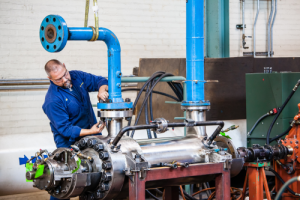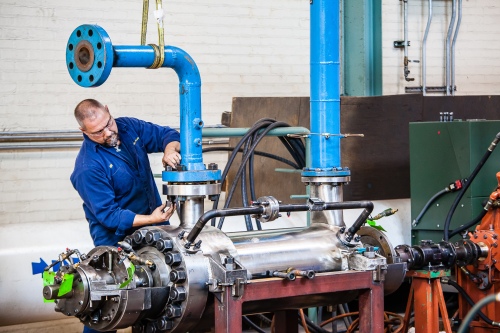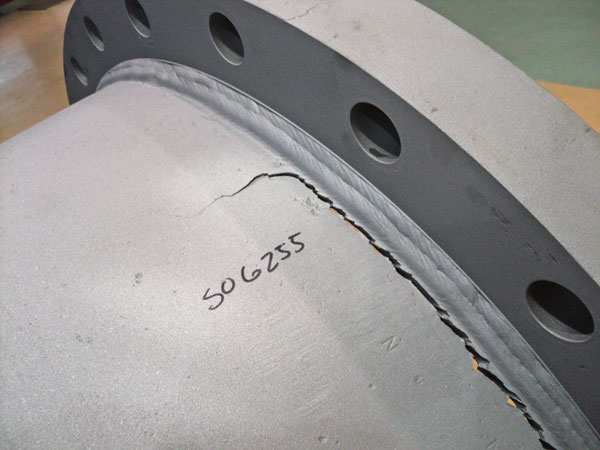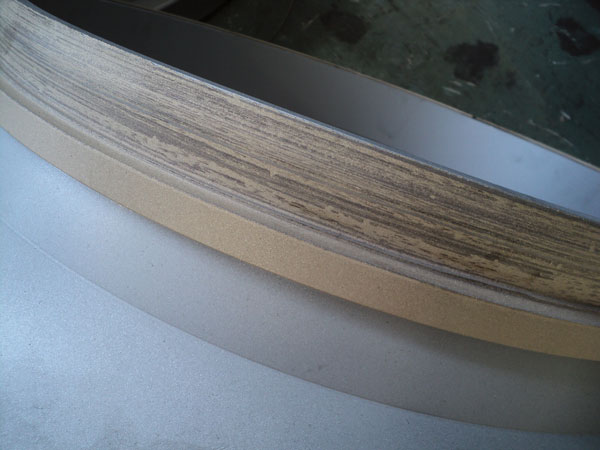Faisal Salman and Nick Dagres of Hydro, Inc report how performing new design modifications on two critical safety-related charging pumps have extended their lifespan and reduced maintenance.
Written by: Faisal Salman & Nick Dagres
Published by: World Pumps

Setting up the pump at Hydro’s Hydraulic Institute Certified Test Lab.
A Western European nuclear power plant was having difficulty meeting the necessary hydraulic performance at runout for two centrifugal charging pumps. The system needed 30 ft of Net Positive Suction Head required (NPSHr).
The pumps are safety-related pumps, which pump bore-rated water (water mixed with boric acid) into the reactor to kill nuclear fission. What water is to fire, bore-rated water is to nuclear fission. Bore-rated water kills nuclear reaction.
The two pumps are each about 15 ins in diameter and about 100 ins in length. They were shipped from the Western European site to Hydro, Inc.’s Chicago, IL facility to conduct analysis, redesign, manufacturing, and testing.



